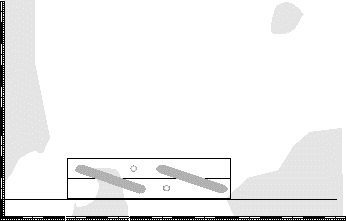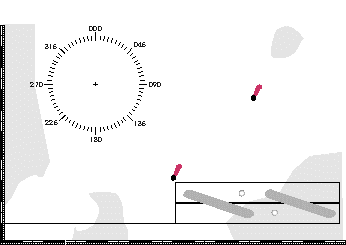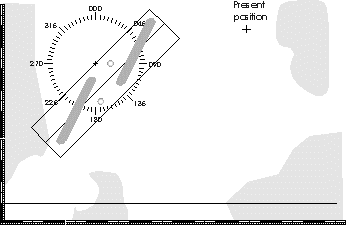 Parallel rulers are used to plot direction on your nautical chart. They are, essentially, two straight-edges hinged so that they maintain the same angle. By alternating the moving edge, and securely holding down the non-moving edge, you can move the rulers about the chart while still maintaining the same angle.
Parallel rulers are used to plot direction on your nautical chart. They are, essentially, two straight-edges hinged so that they maintain the same angle. By alternating the moving edge, and securely holding down the non-moving edge, you can move the rulers about the chart while still maintaining the same angle.

To determine the direction between two positions or points on a chart, line up the rulers with the two points and then step the rulers to the nearest compass rose.
Once you have the edge of the ruler in the center of the compass rose, you can read the direction. Make sure you read the direction on the side of the compass rose in your intended direction of travel. In this case, to travel from the southern-most buoy to the northern-most buoy, set your course to 045° True. However, to travel from the northern-most buoy to the southern buoy, you would set your course to 225° True.
 Conversely, to plot a course line from your present position, start at the compass rose. Line up one edge of the rule on the cross in the center of the compass rose, with that same edge projecting through the direction of your intended travel. Walk the rulers to your present position and draw the course line. This is how to plot a course of 225° True.
Conversely, to plot a course line from your present position, start at the compass rose. Line up one edge of the rule on the cross in the center of the compass rose, with that same edge projecting through the direction of your intended travel. Walk the rulers to your present position and draw the course line. This is how to plot a course of 225° True.

Draw a line along the ruler, southward from your present position, to indicate a course line of 225° True. If you were to draw a line northward along the ruler from your present position, you would plot a course of 45° True, the reciprocal (opposite) direction of your intended course.
Helping To Save Lives
